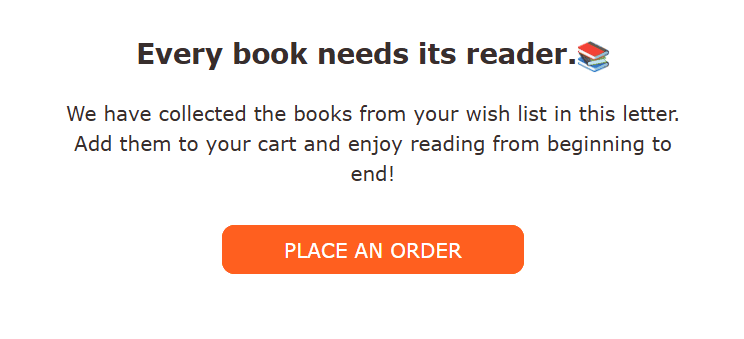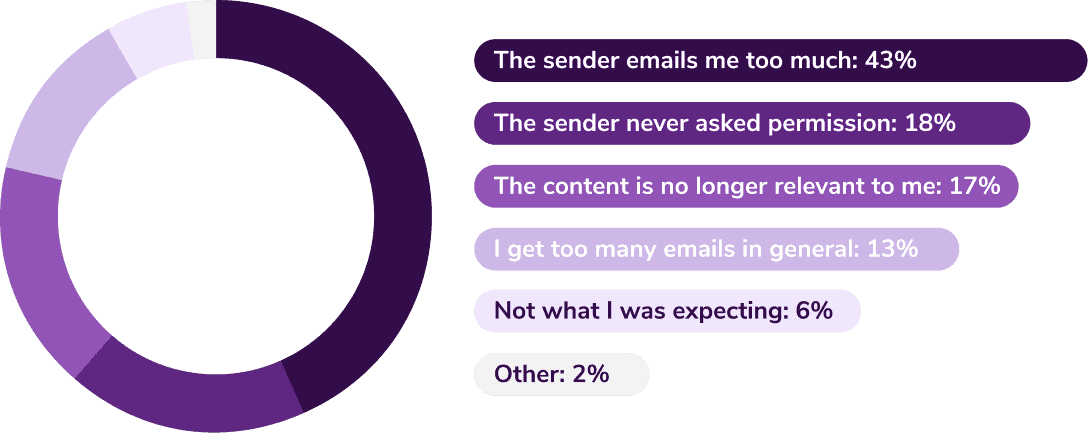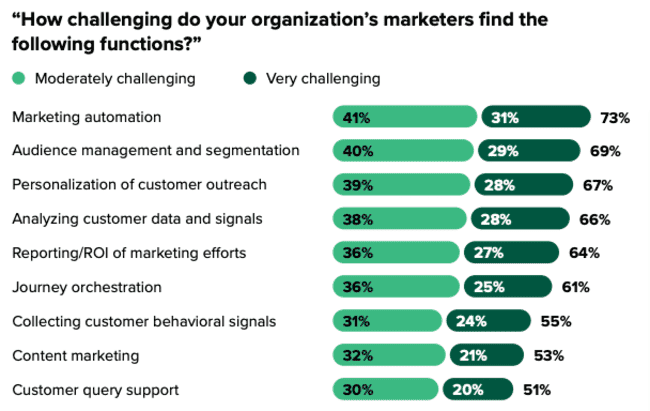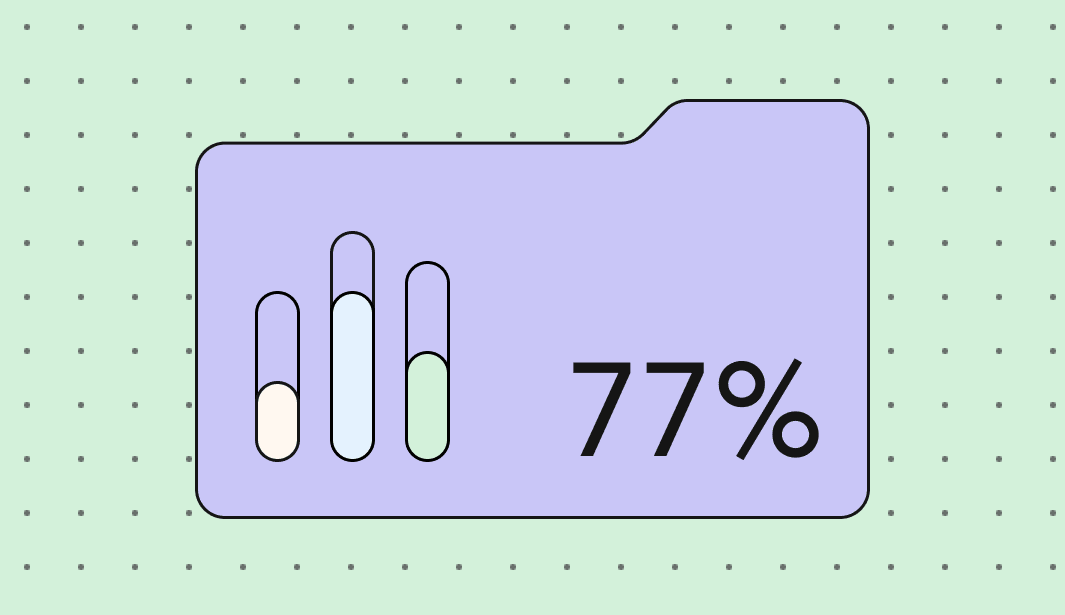This article explores the top 10 email marketing automation statistics. Specifically, it examines the key indicators of personalized campaigns, challenges, and study best practices.
To date, only 47% of marketing professionals know how to measure the impact of automation on their strategies. Despite a spike in the use of promising tools and the constantly rising pressure to meet goals, most teams still struggle to answer the main question: “Is our email automation actually working?”
Email marketing is ranked as one of the highest ROI channels; as such, there’s a lot at stake in relation to this strategy and the appropriate tools to use. However, without clear indicators, marketing teams risk relying on tools that underperform. So, what are the key statistics to assess your results? You are about to find out.
Top 10 key email marketing automation statistics you should know
The time of manual email marketing campaigns has passed, and that’s a fact. In its place, automation has become a new and reliable way to deliver a specific message to the right person at the right moment. The best thing about it is that when it is implemented correctly, it not only saves time but also improves results.
Let’s take a closer look at the numbers that define how effective automation is:
- Automated emails result in 320% more revenue than standard non-automated emails.
- About 96% of marketers see improved results from the personalized experiences that automation helps them create.
- Marketing teams that use automation can reduce their campaign production time by up to 40%.
- About 37% of email marketers use AI to automate campaigns and increase efficiency.
- Around 20% of email marketing specialists plan to automate their strategies using AI agents.
- Automated marketing messages have a 70% higher open rate than generic emails.
- Over 47% of marketers already know how to integrate automation into their marketing campaigns.
- About 20% of top marketing AI tools focus on automating workflows.
- Automated emails with personalization elements generate a 6x higher transaction rate than generic messages.
- Around 68.5% of marketers confirm that automation has significantly improved their message-targeting efforts.
Key indicators of personalized email campaigns
Email marketing automation is only as effective as the results it delivers. Apart from the proven time-saving benefits reported by 74% of the professionals who use it, automation makes personalization at scale possible.
Let’s take a look at numbers that show whether your marketing emails reach the right audience.
Open rates
Getting recipients to open emails in their inboxes is the first step to winning them over. That’s when you can assess whether your marketing efforts paid off. The key that unlocks this first step is to use personalized and relevant subject lines.
Emails with personalized subject lines have a 26% higher open rate than generic ones.
However, before you associate personalization with a name variable, you have to find an occasion to connect your messaging with the target audience. In line with this idea, a good email subject line balances value and intrigue: While the former makes the message relevant, the latter encourages action (this is the topic of our second section) below.

(Source: Email from KLR BUS)
Click-through rates
The next stop in core email marketing metrics is click-through rates. What are the important facts supporting the use of automation in this campaign?
According to Omnisend, automated emails received a 332% higher click rate than non-automated ones. Additionally, the average click-through rate reached 5.4%, outperforming manual campaigns.
Such high rates can be attributed to the strategy of choosing the perfect moment to send a specific marketing message, and with automation, this goal can be achieved through appropriate campaign settings.
Conversion rates
How about an unbelievable 2,361% increase in conversions? That’s another amazing result marketing automation tools can bring. When email campaigns are well-timed and targeted, they encourage conversions by delivering value to the recipient. Thus, rather than sending one-size-fits-all messages, automation tools can help adjust messaging to customers’ behaviors and to the specific occasions to which they can relate.
Let’s take a look at a common example — an automated wishlist reminder email. This is a simple message that features a heading, the actual message, and a call to action. Unlike other emails, however, this message includes specific items from a customer’s wishlist and not just random recommendations. When sent after a period of inactivity, such emails encourage prospective customers to review their favorite items and complete purchases. Similar emails account for 87% of all orders.

(Source: Email from Readeat)
Unsubscribe rates
However, not every click leads to a conversion, but at what moment does this signal a problem? The average opt-out rate is anything less than 2%, and automation can either reduce or increase this rate.
When executed properly, emails bring more relevance and lower opt-out rates. However, when workflows are too frequent or generic, they often result in spikes in unsubscribe rates.
Related to the above, let’s examine the top reasons for unsubscribing according to ZeroBounce:
- 43% of email recipients unsubscribe from marketing messages if they are sent too often;
- 17% of recipients mark emails as spam when they consider the content irrelevant;
- 18% of recipients unsubscribe when marketing emails are sent without their permission.

(Source: ZeroBounce)
As a workaround, you may offer subscribers to set their preferred frequency and always send personalized messages that revolve around the target recipients.
Bounce rates
Last but not least is the bounce rate. A successful email marketing campaign should aim for a value of less than 1%-2%. Anything higher typically results from issues with list quality or setup.
What does automation software have to do with bounce rate? Automated emails are sent consistently, so any deliverability problem multiplies over time. If not addressed promptly, this issue can lead to a low domain reputation and eventually trigger spam filters.
Here are a few tips on how to keep your bounce rates in check:
- email list hygiene: Regularly cleaning the contact lists can increase deliverability by up to 20%. Most marketing automation platforms offer solutions for validation, so you must always verify emails;
- hard bounce removal: While soft bounces can be temporary, email addresses with hard bounces should be removed from the list.
Key challenges in email marketing automation
Email marketing automation has its downsides despite its high potential. For example, when not executed strategically, it often leads to wasted effort and missed opportunities. However, your next campaign does not have to be a “lesson.”
Here’s a handpicked list of challenges typically faced by marketers so you would know exactly what you are up against:
- 31% of marketers found the implementation of automation software extremely challenging;
- 61% of businesses believe that inaccurate data impacts the effectiveness of AI for personalization;
- 36% of marketing professionals spend around 6 months implementing an automation tool into their workflows;
- 29% of companies do not use some automation features because they lack knowledge about such features and how to use them.

(Source: Email Vendor Selection)
These numbers reveal a clear pattern: The implementation of marketing automation tools remains the biggest challenge in most cases. In particular, companies struggle to embed software and often lack knowledge of how to maximize it.
The good news, however, is that proven approaches can help you avoid these pitfalls and make automation more efficient. The next section discusses how you can achieve this goal.
Best practices for email marketing automation
You know you have mastered marketing automation when emails do not seem automated. They are relevant, personalized, sent at the right moment, and delivered to the right person. But what makes these emails translate to successful results?
Let’s take a closer look at the best practices for automation in marketing:
- create triggers: Trigger emails reach a 45.38% open rate, compared to 40.08% for generic newsletters. These messages are sent in response to a particular customer action, which makes them highly relevant;
- set up autoresponders: Autoresponders receive a 5.59% open rate, while newsletters only reach 3.84%. This huge gap proves that automated emails outperform generic messages when sent with a purpose;
- segment the audience: Dynamic segmentation can improve conversion rates by up to 15%. Why? Because it ensures that marketing messages are aligned with the recent needs of the customer, making the offer relevant and difficult to refuse;
- A/B test campaigns: 1 in every 8 A/B tests significantly improves results, which means having multiple hypotheses brings you closer to achieving excellent marketing results.
All these approaches have one thing in common: They all deliver messages based on the prospect’s behavior and data. The more relevant your marketing emails are, the more likely recipients are to turn from skeptics into loyal customers.
Usage trends of AI in email marketing automation
The evolution of customer expectations and automation capabilities is often accompanied by changes in usage trends. What started as a way to save time has found new ways of implementation, with marketing support opening the list.
Let’s study Planable’s recent survey and explore how marketing teams use AI effectively:
- around 29% of 870 marketing professionals use AI for content creation and workflow optimization;
- only 10% use AI purely for automation or productivity purposes;
- about 7% of specialists have reported never using AI;
- almost 40% of marketers use AI tools daily for various purposes;
- only 30% of marketing specialists trust the information provided by AI, with the majority (48%) stating that their trust depends on the tool.
In summary, while many marketing teams use AI for work, automation remains one of the least popular use cases. This means that skepticism about the information provided by AI remains, and the industry has yet to be explored by specialists in the field.
Wrapping up
Email marketing automation is the key to sending messages that resonate with target audiences at scale. Despite challenges, automation shows positive results when applied in actual practice. The key? Sending personalized emails, cleaning contact lists, setting up triggers, and testing different variants. The next theory might just be the one.
I hope this article shed some light on automation statistics and helped you assess your results better. Good luck with the upcoming campaign!
Create emails that convert with Stripo


